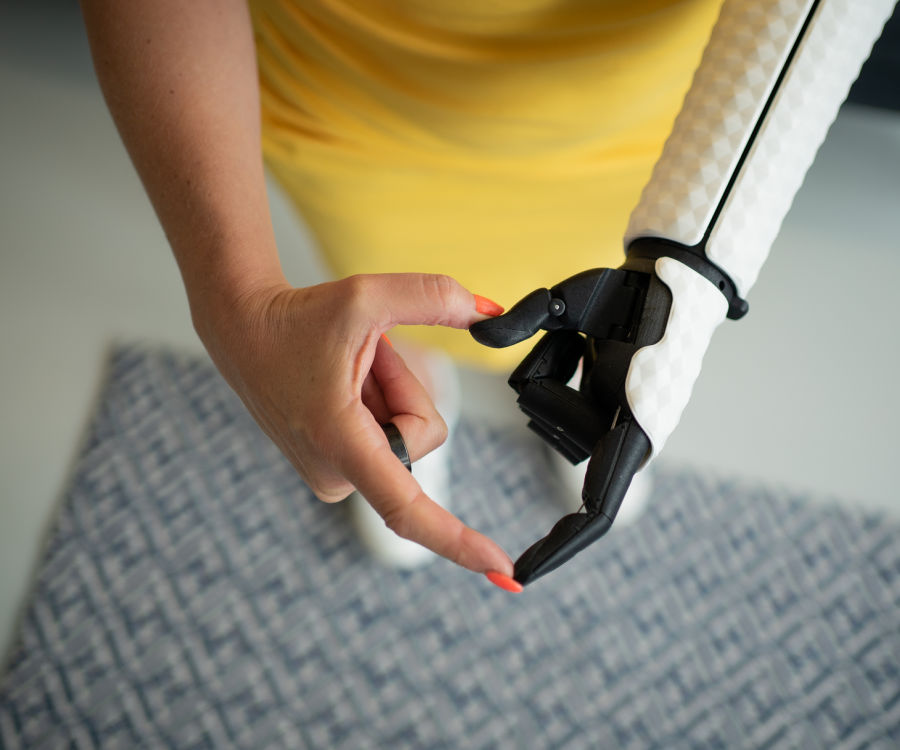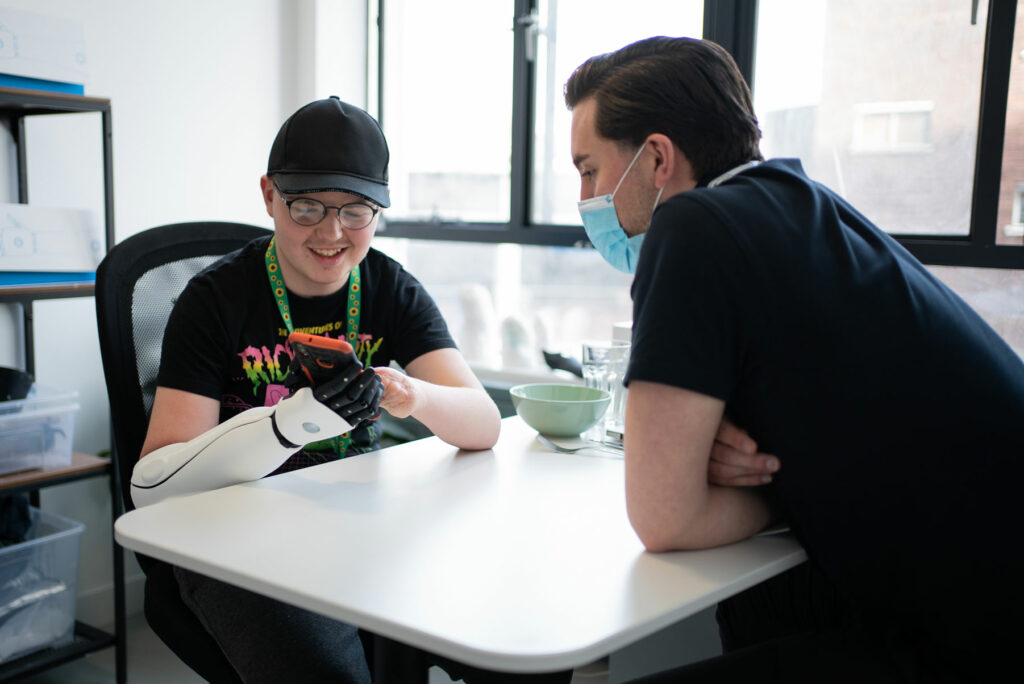How does Open Bionics configure a custom robotic prosthetic arm?
4th November 2021

4th November 2021

When you wear something everyday it needs to be practical, it needs to be comfortable, and it needs to reflect your unique style and individuality. These requirements become all the more important when the item in question just happens to be your very own robotic prosthetic arm. But people come in all shapes and sizes and so do their limbs, so how can Open Bionics provide an advanced, below-elbow prosthetic arm that ticks all these boxes for so many people? The answer is by embracing individuality! Each Hero Arm is custom; from the flexible socket that hugs the user’s limb, right down to the selection of unique cover designs that enable people to flex their own style. The configuration team at Open Bionics makes all this possible by individually tailoring each robotic prosthetic arm to its user; from fingertip to elbow.
“
Precision is vital at this stage in the process as tiny changes can hugely impact the shape of the arm, how comfortable the socket is or even how easy the arm is to control.
”
It all starts with a cast. Before an order is placed, the Open Bionics in-house clinicians or those from a partner clinic will have a session with the user discussing their individual requirements, establishing the best locations for the EMG sensors that allow the user to control the arm and picking the all-important cover designs. A measurement of the user’s residual limb will be taken (either by a 3D scan or plaster cast) and turned into a 3D digital model using 3D scanning technology. This model and the accompanying user requirements will be sent to the configuration team at Open Bionics and the clever design process will begin.

The configuration team will then use 3D modeling software to make the digital model of the residual limb ready for the creation of the custom frame. This process includes smoothing out all the inconsistencies and rough edges present on the physical cast as well as marking the locations of important features that dictate the shape of the socket. Precision is vital at this stage in the process as tiny changes can hugely impact the shape of the arm, how comfortable the socket is or even how easy the arm is to control.
“
At this stage the fully-flexible, breathable socket is generated from the digital model following the exact shape of the user’s residual limb.
”
The modified digital model is then transferred to the custom automation system developed by Open Bionics. This is where the custom robotic prosthetic arm really begins to take shape. Automation plays a vital role in the customisation process of the Hero Arm, ensuring consistency, functionality, and crucially allowing a fully custom 3D printed robotic prosthetic arm to be offered at a price point that users can afford. At this stage the fully-flexible, breathable socket is generated from the digital model following the exact shape of the user’s residual limb, this produces a socket unique to the user that fits like a glove achieving the highest level of comfort. Configuration engineers will decide the location of features such as the Boa fit system which allows the user to adjust the fit and feel of the arm on-the-fly without even having to take it off. From here, the strong internal frames and base covers are generated providing the core structure of the Hero Arm.
The final stage in the configuration process of the Hero Arm is to design the covers. The user’s choice of cover style from the large catalog designs available is digitally formed around the frames of the Hero Arm. Configuration engineers use computer aided design software to carefully sculpt the 3D models for each set of covers, ensuring that every Hero Arm always looks its best. This process results in a completely unique set of covers, no two Hero Arms will ever be the same.

The configuration journey is now complete, but at this stage this arm only exists as a set of 3D models on a computer screen. It is up to the production team at Open Bionics to take these models and make the robotic prosthetic arm a reality, completing the journey from that initial clinic session to the user receiving their own Hero Arm, made just for them.
We set out to create an affordable bionic arm that was durable, light, and very very comfortable. We’re really proud of the process we’ve created to ensure every Hero Arm is as unique as its user and comfortable enough to wear morning to night! We’ve even had a user wear their Hero Arm to bed!
Ready to start your bionic journey? Sign up here.